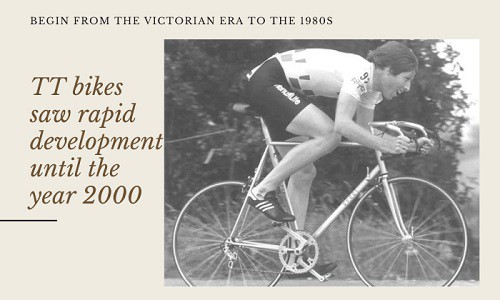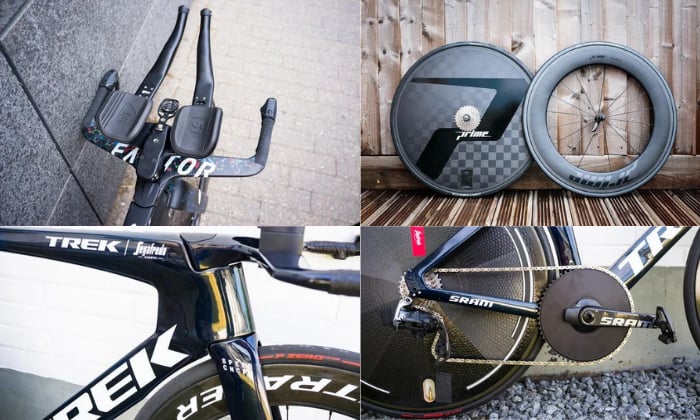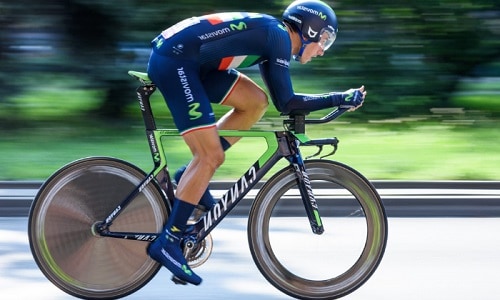There are bicycles beyond the standard road bike and MTB, each one built for specific events and varying performance goals. But what is a TT bike and why does it have striking features that sets it apart from other designs?
The time trial bike, TT for short, is a specialized bicycle that focuses on speed. The unique look is the result of various designs that aim to improve aerodynamics and reduce drag on straight, flat surfaces.
Keep reading to learn more.
Table of Contents
What Makes a TT Bike
Compared to other bicycles, a TT or time trial bike looks like something only for showing off due to its striking characteristics and sharp look. However, such cycles are high-performance machines built to reach speeds greater than many would think possible.
Road bikes are known to reach up to around 30 mph and more, but it gets increasingly more challenging to increase your speed as you go up from this point. The faster you get while cycling, the more resistance you have to deal with. However, there are ways to break through this limit.
Aerodynamics bicycles can effectively reduce the amount of resistance met by cycling at higher speeds. TT bikes’ geometry makes the chest more parallel to the ground and allows cyclists to hunch over to aid in decreasing drag.
Their frames are also heavier than road bikes, with shorter top tubes and steeper seat angles, making them more aerodynamic but tougher to move uphill.
But when looking at the TT bicycle vs road bike, the increase in speed alone (up to 1.5 mph) is substantial.
If we compare a TT vs tri bike, there are many similarities with a few key differences. TTs are focused on dishing out speed at the expense of a cyclist’s energy and comfort, while tri bicycles factor in rider comfort to accommodate the longer duration of triathlons.
Also, to qualify as a TT cycle, a design needs to adhere to the regulations imposed by the Union Cycliste Internationale (UCI), which governs and promotes competitive bicycling the world over.
Triathlon bicycles are not constrained in the same manner, and while this seems like an advantage, it also means that tri bikes may not be usable in time trial events sanctioned by the organization.
A recent record holder has a speed of 31.4 mph or 50.5 km/h on a TT bike with a triathlon frame. This means that with some tweaking, triathlon cycles can still be used, but TTs are probably the safer route to go.
A Brief History
TT bikes began to take shape in the Victorian era through the 1980s with the development of disc-based wheels, downward-sloping top tubes, and tri-bars. Things took off in the 1990s, when the use of carbon fiber allowed frame shapes to take on more variety, allowing for greater speeds.
Various cycling competitions were dominated by athletes using TT bicycles, from the Olympics to the Tour de France. These positive results led to a growth in the bike’s popularity at times, overshadowing its rider.
TT bikes saw rapid development until the year 2000, when the UCI imposed strict rules to ensure that cycling focused on its sporting aspect as opposed to innovation and engineering.
Features of a TT Bike
Time trial road bikes have a distinct appearance that makes them easy to identify. Here are several key characteristics that define TT bicycles.
- Their handlebars extend further forward to allow cyclists a more aerodynamic riding posture.
- They often have solid disc wheels for the rear, and front wheels have deep rims that sport fewer spokes.
- Tires are built purely for speed at the expense of durability, making them easier to wear out or puncture.
- Frames are often carbon fiber, and seat tubes have steeper angles, placing the rider farther in front of the bottom bracket.
- Larger chainrings and more narrow cassettes exist to optimize cadence.
Benefits of Riding a TT Bike
TT bikes exist for one thing—speed, and all of its features are there to aid racing. There are many things that cyclists need to help them ride faster, and here are the benefits of using time trial cycles for that purpose.
- Allows riders to adopt a more aerodynamic riding position
- Specialized frames and very deep front wheels reduce friction by cutting through air resistance.
- Shifters are specially positioned to allow riders to maintain their position throughout the ride.
Uses of a TT bike
Because of their focus on speed, these cycles have also compromised on many things that allow other bicycles to be versatile. Such design choices allowed TTs to be faster than the standard racing bike, but only for straight and flat roads.
Another important thing to know about them is that they are difficult to ride due to the aerodynamic position that puts a lot of strain on the rider. Couple this with the fact that the entry-level TT bike price is around $1500 to $2000 means people should think twice before committing to such a machine.
Models for high-level competition go as expensive as over $10000, but if you’re looking to compete in speed, especially for officially sanctioned time trial events, TT bikes are the obvious choice.
Conclusion
What is a TT bike? More than just knowing what TT stands for, you are now familiar with what they can do and how they reach this level of performance. Now, you have enough information to decide whether or not this type of cycle is right for yourself.
Have you seen or used a time trial bike before? What made you want to have one for yourself? Tell us your thoughts on the bicycle in the comments section below.
Always ride safely.

“I ride my bike to work for years, but is that enough? Our carelessness towards our surroundings has taken a toll on the environment. And now, everyone is responsible for changes; even the most minor contribution is counted. With this hope and spirit, I started with my partner to establish Biketoworkday to help more individuals commute to their work sites on their bikes.”






